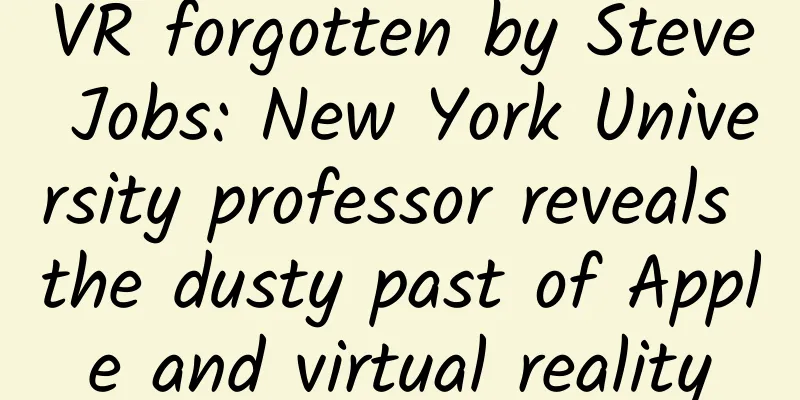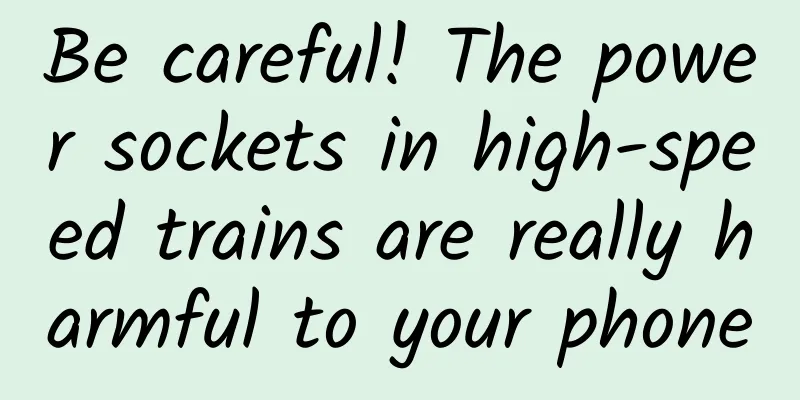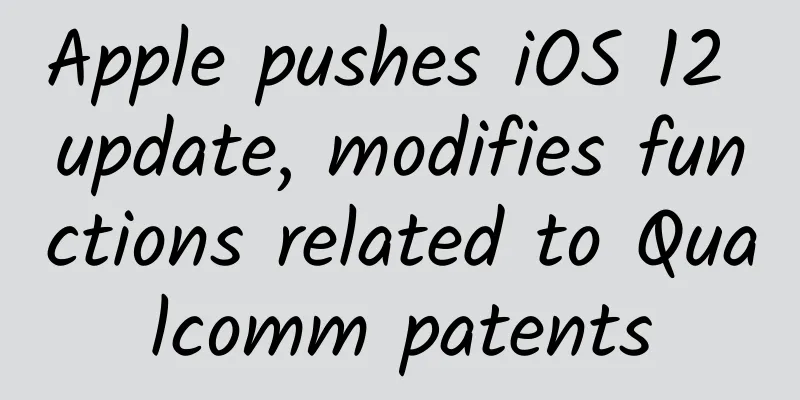VR forgotten by Steve Jobs: New York University professor reveals the dusty past of Apple and virtual reality

Years before Google and Oculus began dreaming up virtual reality, Apple already had a "VR" product on the market.Apple calls it QuickTime Virtual Reality, or QuickTime VR.
It is one of the strangest projects in Apple's history: it was launched when Jobs left for NeXT, led the technology industry for decades, but fell out of favor in its later years and was eventually abandoned. "When QuickTime VR came out it wasn't video, it was still images that were stitched together to create a 360-degree view," said John Sculley, Apple's CEO from 1983 to 1993. "It seemed pretty amazing at the time."
John Sculley, former Apple CEO So while QuickTime VR wasn’t exactly like the immersive skydiving videos you’d find on YouTube today, it was still groundbreaking, and its development offers a cautionary tale for the current wave of immersive video being pioneered by companies like Google, Facebook, and Samsung. Here’s the story behind Apple’s forgotten VR project: Ahead of its timeQuickTime VR serves the same purpose as 360-degree videos on Facebook, allowing viewers to immerse themselves in a different physical space — or observe a specific object — through panoramic images. At the time, it was magic. Users could look around a virtual world by dragging their mouse. Today, there are thousands of YouTube videos that allow you to do the same thing online. However, in the early 1990s, when QuickTime VR was developed by Apple's human-computer interface team, digital cameras were far from being as advanced as they are today, and there were no 360-degree cameras like Google Jump. So the solution is to take a bunch of photos with a still camera and then stitch them together into a QuickTime panorama, Apple's QuickTime is an image file format that allows computers to display and explore these panoramas. "The first panoramas I did were kind of a hack," Dan O'Sullivan, an early QuickTime VR engineer and NYU professor, tells us. "It was just taking millions of pictures and animating between them. I did all of this with a single camera because it would be too expensive just to imagine the array of cameras we use today." But even once the photos were taken, it took a huge amount of computer power to stitch them into a panorama - something we can do today with our mobile phones. "It was extremely arduous, stitching all that together, and it was a lot of work. Apple even bought a Cray supercomputer to do a lot of the processing," O'Sullivan said. Years of developmentQuickTime VR was officially released to the public as a standalone product in 1995, but before that, it had been a project in Apple's labs for several years. It became a research project at Apple's Human Interface Lab in 1991. And the reason why the project started was that the researchers wanted to play with cutting-edge technology and systems. They tried to create three-dimensional digital objects. "I was just an intern that Mike Mills (creator of QuickTime) brought in," O'Sullivan said. "So when things got stuck, I was the little weirdo sitting in the corner scanning Coca-Cola cans." But the early experiments were so successful that Apple poured more resources into the project, including a Cray supercomputer. “I remember Sally Ride was on the Apple board at the time, and she couldn’t believe that you could do 3D geometry in real time. That’s how it all started.” So the QuickTime VR team, which included Eric Chen (the software debuted in 1995), worked to come up with new ways to stitch photos together, using it to capture major landmarks. One immersive photo was taken from the top of the Golden Gate Bridge. Apple got permission from the mayor of San Francisco to get to the top. The photo can still be seen on Sullivan's website.
After the QuickTime VR team presented a demo at Macworld, one of the largest conferences at the time, the team went to more expansive locations to capture 360-degree imagery—like Russia and Paris. "I was on stage demonstrating the project, and Apple knew this wealthy lady who was an important figure at the National Gallery, and the National Gallery knew someone important in Russia. So anyway, we got on a plane to Russia," O'Sullivan recalled. But the most important part of the QuickTime VR project began after it left Apple's research labs. Simpson caseQuickTime VR first gained national attention during the O.J. Simpson trial in 1994, when NBC used its technology to map Simpson's apartment. NBC filmed 26 different locations in the Simpson apartment and stitched them together into a 360-degree panorama using QuickTime VR. TV anchor Jack Ford used those visuals to give viewers a sense of presence. “I knew the discovery of the body, the blood, the location would be a big story, and I had heard from a friend at Apple that QuickTime VR was coming out,” said David Bohrman, then a feature producer for NBC News. “We shot a series of locations, maybe 10 or 12, where the blood was found. We followed it to the back of the apartment, where the theory was that Oimpson was picked up.” "Our reporter, Jack Ford, was able to pull up the exact geolocation and show what they were talking about. He could zoom in a little bit, he could manipulate it. It's an amazing tool." Poor man’s VRAt this point, you’re no doubt aware of Apple’s attempt at panoramic imagery, and it’s easy to connect it to the recent emergence of 360-degree video — or to immersive services like Google Street View. Much of what's been called VR lately isn't a fully interactive environment, but a descendant of the 360-degree images pioneered by Apple. Just the subject, not the interactive scene "Head-mounted VR didn't exist at the time. So it was poor man's VR. Calling it VR is controversial and a bit presumptuous," O'Sullivan said. In some ways, the components of immersive panoramas haven’t changed much since the early 90s—it’s just that they’ve become easier to do recently. "Quicktime VR is like a poor man's VR, and now you know it's fun," O'Sullivan said. "I think there are two kinds of VR: photographic VR that shoots 360-degree video, and then there's VR that's more interactive." When Jobs returned to Apple, QuickTime VR was no longer a priority. Apple issued its last press release for QuickTime VR in 1997, although it continued to use it to provide 360-degree viewing for new products, such as the iPod, until 2006. Bohrman said: "QuickTime VR really developed during the Sculley period before Jobs returned, and I don't think Apple paid attention to anything that happened during those years." It's no surprise that Apple would experiment with virtual reality -- even in a rudimentary form -- before the general public was ready. “Even to this day, Apple is not the most advanced company when it comes to data science, but when it comes to user experience, it leads the world,” Sculley said. “We go deep into experiences, and obviously QuickTime and QuickTime VR are great examples.” |
<<: Developing mobile 3D games based on Three.js+WebGL
>>: AMD will launch a low-cost VR graphics card to lower the threshold for VR experience
Recommend
Haima Automobile sells its houses to save itself, FAW completely withdraws, and its equity is transferred to Hainan Holdings
Haima Automobile, which has attracted attention d...
A comprehensive summary of mobile UI design specifications
When many newcomers start to design mobile UI, th...
China’s new energy vehicle batteries have CATL, when will domestic electronic control chips arrive?
The recent ZTE incident in the communications fie...
"Tianmo chip" boosts the "acceleration" of intelligence! Another major breakthrough in Tsinghua chip!
Recently, the brain-like computing research team ...
The moon waxes and wanes? In fact, the moon has eight faces!
Do you know what shape the moon is? Round? Half r...
The 2022 14th Five-Year Plan for Retirement has been announced! What are the latest pension policies? Rural pensions will increase!
According to the results of the sixth national ce...
High-traffic and high-concurrency solution course
: : : : : : : : : : : : : : : : : : : : : : : : : ...
What substance is fire and what form is it in?
Objects in nature generally exist in three forms:...
How to get cheap traffic? Douban, the simplest and easiest way to get traffic!
In October 2019, Pinduoduo's market value sur...
The "Four-Hour Sleep Method"? Is it really reliable to imitate animals in sleeping?
"Turning around the red pavilion, lowering t...
Why did the cockroaches that were stepped on to death at home suddenly disappear the next day?
Source: Dr. Curious...
Are you really ready to raise a dragon in the Year of the Dragon?
Dragons are animals from mythology, and it is pro...
Attention! Heavy rainfall in Beijing, Tianjin and Hebei reappears. How to prevent and respond scientifically?
At 10 a.m. today (11th), the Central Meteorologic...
Getting Started Guide to Short Video Promotion!
From the traditional "two Weibo" to tod...
Wuhan health code is online! How to apply? Can it be used for travel? All the answers in one article!
The prevention and control of the new coronavirus...









